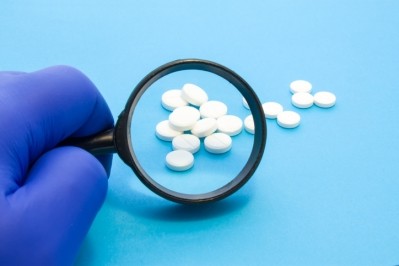NDIs under the microscope at FDA public meeting
15 highlights from the FDA’s public meeting on responsible innovation in dietary supplements

1. Steven Tave, director of FDA’s Office of Dietary Supplement Programs, outlined the scope of the meeting, which would focus predominantly on the New Dietary Ingredient (NDI) provision of the Dietary Supplement Health and Education Act (DSHEA).
“It is not at all uncommon for stakeholders to say that FDA needs to do a better job of enforcing NDI notifications,” he said. “There is a degree of sympathy to that view, but we don’t know what we don’t know.”
Outlining some basic numbers, Tave noted that when DSHEA was passed in 1994 there were an estimated 4,000 products on the market. Fast forward 25 years, and there are between 50,000 and 80,000. Taking the low end of those estimates and subtracting out the 4,000 we started with would give us 46,000 products added to the market. “Clearly, not all would contain NDIs,” he said, “so, let’s assume 90% of new dietary ingredients didn’t need a notification. That 10% leaves 4,600, but we’ve only received 1,100 notifications.
“You can quibble with the math, but I think the orders of magnitude are probably about right. The point is that companies need to improve.”
2. Scott Bass, Head of Global Life Science Practice at Sidley Austin, was one of the key architects of DSHEA. He was the first non-FDA speaker of the day, and he stated that the drafters of DSHEA gave FDA lots of safety powers that didn’t exist before, but stressed that 201(ff)(1) [the definition of “dietary supplement”] cannot be read in isolation. “We wrote that in conjunction with 402(f)(1) – the safety provision.”
3. Bass added that he thinks that the dietary supplements industry has not accepted its responsibility on the safety front in growing from $4 billion in 1994 to $40 billion today. In addition, FDA is inhibiting innovation and actually endangering consumer safety by the way it is interpreting the NDI provision of the law.
4. The word ‘nutritional’ is key to this entire discussion, said Bass. During the drafting of DSHEA, there was a fight to keep the word ‘nutritional’ out of the law. “The word ‘dietary’ supplement is in there because the word ‘nutritional’ is not,” he said. However, in the NDI draft guidance, FDA included an interpretation that a “dietary substance” is intended to mean “foods and food components that humans eat as part of their usual diet”. No innovative product can fit within that definition, said Bass.
“So, here’s the irony caused by this distorted interpretation: This has caused the Office of Dietary Supplement Programs to adopt a tortured position that harms consumer safety,” he said.
“Here’s the logic: Since nothing new can now get in under 201(ff)(1)(E), FDA says, ‘Go do a self-affirmed GRAS, and now that you’re a food, go on the market for 6 months and then you don’t have to file an NDI notice’. It falls into the catchall. This was not intended to lead every new ingredient on the market without any oversight of science. It’s a total distortion.”
5. Bass concluded: “Do we need legislation to create innovation under (ff)(1)? No! We just need to remove this unlawful interpretation (that was published in the NDI draft guidance). Do we need new legislation to provide real exclusivity incentivizes so companies will invest? Yes, we do. And we need new legislation to create incentives for responsible companies to do good science.”
Synthetic botanicals & probiotics
6. The United Natural Products Alliance (UNPA), represented by Larisa Pavlick, VP of global regulatory & compliance, noted that a 2011 letter from Senators Hatch and Harkin urged the FDA to withdraw its first draft of the NDI guidance and re-draw it. The second attempt (2016 NDI draft guidance) also opposed the intent of DSHEA, said Pavlick.

7. UNPA also made a couple or recommendations regarding synthetic botanicals: FDA should recognize synthetic copies of botanicals as new dietary ingredients subject to notification. In addition, FDA should require declaration on the label of the presence of synthetic botanicals.
8. George Paraskevakos, Executive Director of the International Probiotics Association (IPA), also presented some practical proposals for probiotics, including the establishment of a grandfathered or a list of exempt species with a safe history of use. Other stakeholders who were present, such as Jay Sirois from the Consumer Healthcare Products Association (CHPA), also called for FDA to finalize the authorization of an old dietary ingredient (ODI) list.
9. IPA also called for Master Files, which would include information such as whole genomic sequencing for ID, and genomic data showing a lack of production of virulence factors, toxins, or antibiotic resistance, among other things.
10. Michael McGuffin, president of the American Herbal Products Association (AHPA), listed the unresolved issues in the NDI Draft guidance, and pushed for solutions via dialogue. “We saw a 2011 draft and we commented,” he said. “We saw a 2016 draft and we commented. We haven’t seen anything since. I think some of this needs to be resolved via dialogue versus document exchanges.”
“GRAS is generally broken”
11. The Center for Science in the Public Interest, represented by Laura MacCleery, policy director, took aim at the GRAS ‘loophole’ for ingredients, and self-affirmed GRAS in particular, or “secret GRAS” as she termed it.
DHSEA did not envision GRAS being a workaround for the NDI notification process, she noted. DSHEA was signed in 1994, while changes to GRAS were introduced in 1997. “GRAS is for food use, and therefore is totally inappropriate for a different condition of use [from food to supplements],” she said.
“GRAS is generally broken,” added MacCleery.
12. In response, Ashish Talati, partner at Amin Talati, said that we have not seen a self-affirmed GRAS ingredient be pulled from the market. He also said that this is a side issue because the main issue is the lack of NDIs or any kind of notification, and not whether self-affirmation was working.
13. An eye-opening statistic came from Manon Bombardier, Director General at Health Canada, who noted that Health Canada’s resources for its NHP (natural health product) program are significantly larger the FDA’s ODSP.
Health Canada has 150 employees working on NHPs, with a budget of C$14 million (about $10.4 million USD), she said. By comparison, ODSP has between 25 and 30 employees in College Park (not including inspectors in the field) with an official budget of around $4.5 million.
14. Daniel Fabricant, PhD, president and CEO of the Natural Products Association, was head of the FDA’s Division of Dietary Supplement Programs when the first NDI draft guidance was released in 2011. In his comments at the public meeting, Dr Fabricant said, “By not filing an NDI or not meeting GMPs, that’s technical adulteration. I don’t think more people will file NDI notifications unless there’s strong enforcement.”
Strategies
15. Andrew Shao, interim senior VP of scientific and regulatory affairs at the Council for Responsible Nutrition, offered strategies for promoting overall compliance, including:
i. IP protection for safety data – it’s a disincentive to participate in the process if there’s no protection, he said. “Me too” imitators come to the market without any safety assurance. FDA should establish an NDI Master File that can be used or cited by subsequent filers (with permission or licensing). We should also discuss allowing for reference of NDIN# on the label (like Canada does with its NPNs).
ii. Reduce the burden of NDIN submission, said Dr Shao. He also said we need to reduce the confusion around the NDI process and the GRAS process
iii. Meaningful and effective enforcement – There is lack of perceived consequences for those who fail to comply with NDI provision, said Dr Shao. FDA should use its mandatory recall powers (under FSMA). There should be a mandatory product listing to facilitate identification of non-compliant products. Also, FDA should step up through its options, from warning letters to seizure to administrative detentions, fines, debarments, and injunctions.
*****************************************
DSHEA at 25
2019 is the 25th Anniversary of the Dietary Supplement Health & Education Act. The passage of DSHEA is a fascinating story, and two of the key architects of the law, Scott Bass and Loren Israelsen, tell that story exclusively on NutraIngredients-USA.
To watch the full video, please click HERE.
















